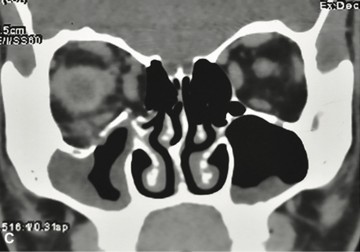A new study by Dr Tarjani Dave and others from L V Prasad Eye Institute report the clinical features of open globe injuries with orbital fractures and discuss the risk factors predicting outcomes. This paper identifies clinical parameters at presentation and the anatomic and functional outcomes of this specific clinical subset.
The skull and its constituent bones are vulnerable to fractures and injury due to trauma. In most cases, incidents like traffic accidents, workplace injuries, or assault can result in such facial trauma. This may be presented as fractures to the medial wall or to the orbital floor in the skull. Frontal facial fractures can occur alongside open globe injuries that penetrate or perforate the eye. We now know that open globe injuries with associated orbital fractures are an identifiable sub-class of clinical conditions.
While the association between various types of orbital fractures and open globe injuries is well-known, there are few predictors of outcomes. Most patients presenting with facial trauma may not be able to sit through an ophthalmologic assessment, because of their injuries. This state presents the clinician with a variety of interventional options, some of which may be contradictory. While there are case reviews of such patients, there is need for a model that can account for the various risk factors involved in open globe injury along with orbital fractures, and explore the final outcomes associated with such complex injuries.
A new paper in the Seminars in Ophthalmology by Dr Tarjani Dave and others presents a retrospective, non-interventional case series of 91 patients (91 eyes) with concurrent open globe injuries and orbital fractures who underwent management at LVPEI. The study looked at favorable functional visual acuity achieved, and favorable anatomic outcome achieved. The patients, mostly male (81%), were selected retrospectively using the electronic medical record data from January 2014 to 2021. The injuries were graded based on the Birmingham Eye Trauma Terminology (BETT), along with zone of injury.
The paper notes that globe rupture is predominant injury in this study, perhaps due to the kind of trauma involved (fall, accident or assault). It shows how associated fractures affect final outcomes in such cases and the authors reported that fracture involving the orbital rim is a strong predictor of associated open globe injury. Retinal detachment along with orbital fracture is the single biggest determinant for poor anatomical outcomes. It notes that no particular wall involvement in the injury makes a difference to the outcomes. As fractures mount across the orbital rim, so does the risk of eyeball loss.
'Usually, orbital fractures involve the orbital floor and there is motility restriction of the eyeball. But we found that the most common orbital wall involved in concurrent globe injuries is the medial wall. Hence the classic motility restriction may not be seen,’ says Dr Vivek Dave the corresponding author of this paper and Consultant Ophthalmologist, Anant Bajaj Retina Institute, LVPEI.
Citation
Dave TV, Chheda PP, Das AV, Dave VP. Open Globe Injuries with Concurrent Orbital Fractures - Clinical Settings and Factors Predicting Outcomes. Semin Ophthalmol. 2023 Jan 22:1-7. doi: 10.1080/08820538.2023.2169582. Epub ahead of print. PMID: 36683272.
Photo credit: Fig 1, image C, Orbital CT coronal image suggestive of a large floor fracture with prolapse of orbital contents into the maxillary sinus; Dave et al.



